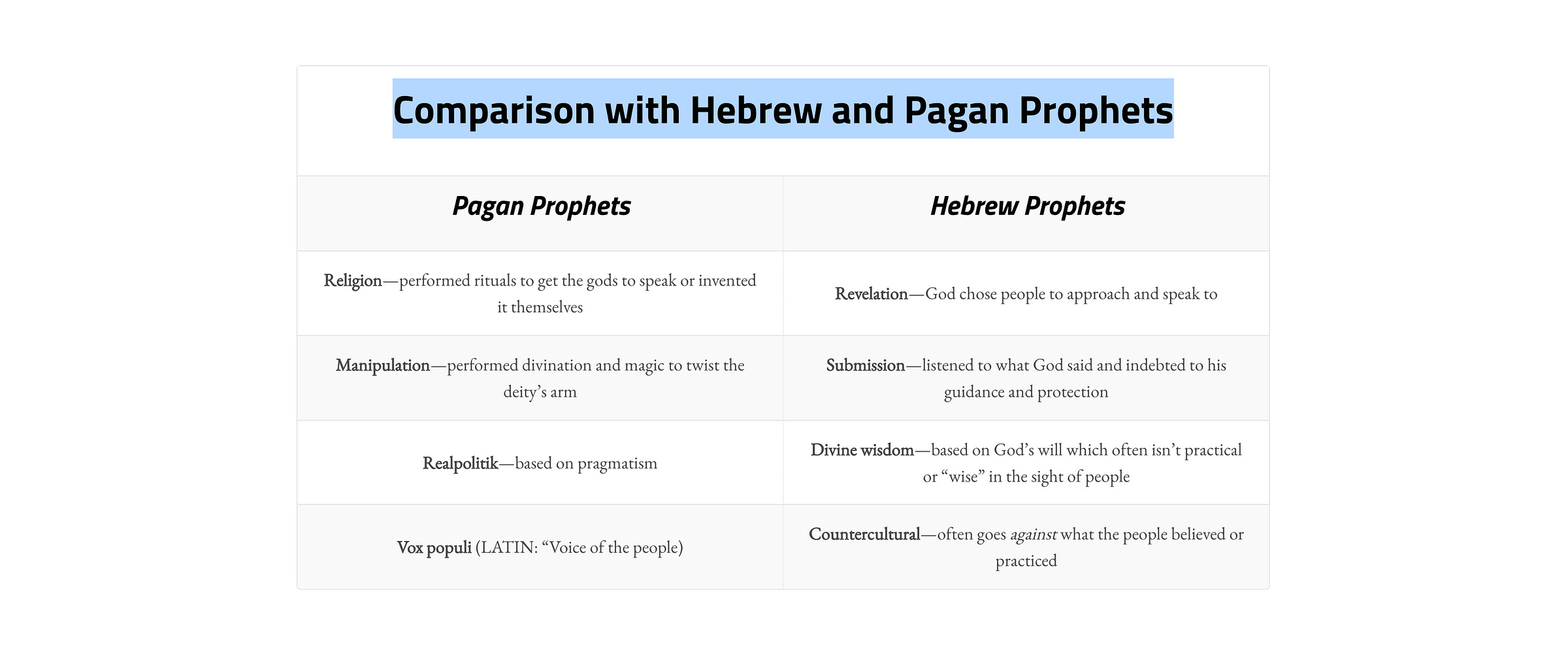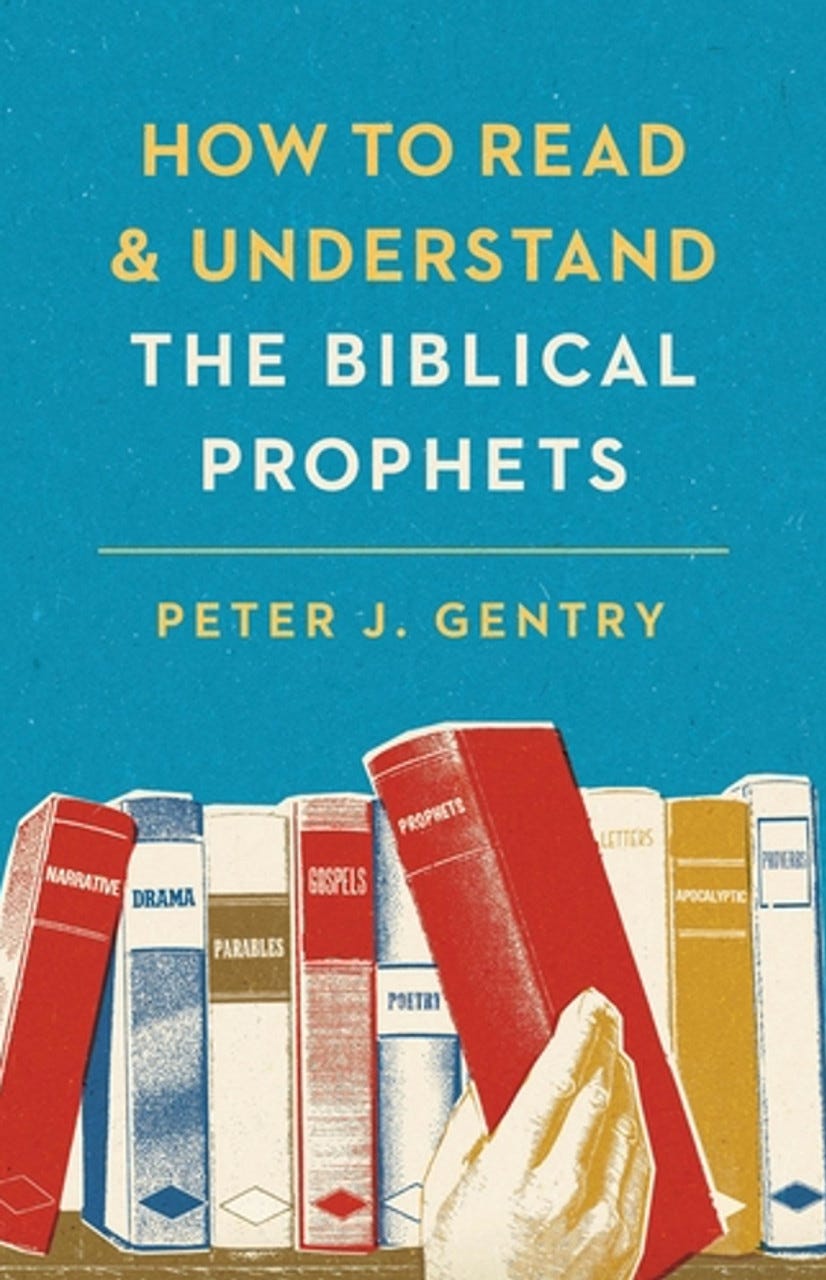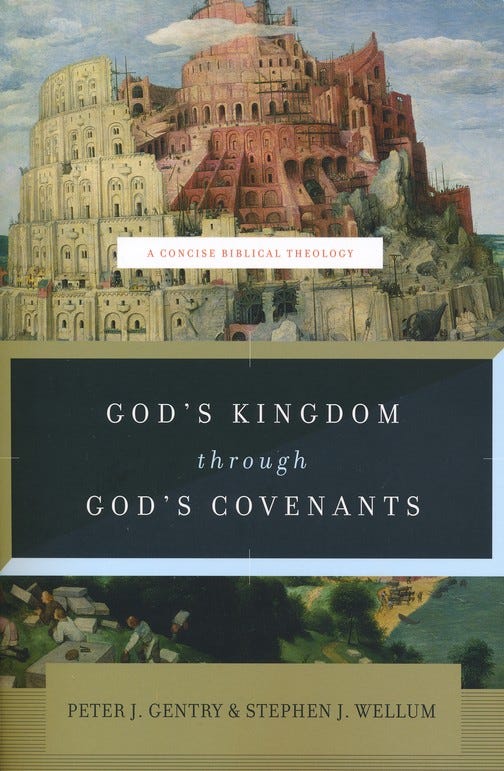How to Read the Prophets like Jesus
Are you excited to absorb the Message of Yahweh that came to his prophets in the Old Testament? If so, then you will enjoy this post!
THE HERMENEUTICS OF THE OLD TESTAMENT PROPHETS
What is hermeneutics? Hermeneutics is the art of interpreting texts. The English word comes from the Greek word for “interpretation” (ἑρμηνεία). When we speak of biblical hermeneutics, we are referring to the discipline of (properly) interpreting the Bible. I write as an English-speaking Reformed Christian. This means that when I say “Bible”, I refer to the 39 books of the Old Testament and 27 of the New Testament. This post is about proper hermeneutics regarding the section of Scripture known as the (writing) Prophets, or the Prophetic Books. This section is usually comprised of 16 different books.
WHAT IS A PROPHET?
In the Old Testament, the role of the prophet is to be a spokesperson for God. The Hebrew word used most frequently for a prophet is nabi'; a"spokesman." Other titles used for prophets:
ro'eh, "seer"
hozeh, "seer"
'ish-ha'elohim, "man of God."
The Old Testament prophets were called by Yahweh to be his ambassadors before the world. The primary role for a prophet is to be one who communicates the revealed word of Yahweh. This office began with Moses, when he was called by Yahweh in Exodus 7:1: “Then the Lord said to Moses, ‘See, I make you as God to Pharaoh, and your brother Aaron shall be your prophet’. Moses also set up the criteria for identifying a true prophet in Deuteronomy 18:15-22. To reiterate: in the Hebrew Scriptures, a “prophet” is someone who speaks on behalf of Yahweh.

WHO ARE THE OLD TESTAMENT PROPHETS?
Numbers 12:67-8 records that Yahweh spoke face to face with Moses. This is a Hebrew idiom denoting a direct intimacy. With the prophets after Moses, Yahweh usually revealed himself via dreams and visions. The Prophets include Isaiah, Jeremiah, Ezekiel, and Daniel (dubbed the Major Prophets primarily due to their size). The Prophets also include Hosea, Joel, Amos, Obadiah, Jonah, Micah, Nahum, Habakkuk, Zephaniah, Haggai, Zechariah, and Malachi (dubbed the Minor Prophets).
OT PROPHETS IN REDEMPTIVE-HISTORICAL CONTEXT
The broad historical context of the prophetic books is from 760 BC to 460 BC. The ministries of all of the writing prophets can be dated from the eighth to the fifth centuries BC. 1-2 Kings, 1-2 Chronicles, Ezra, and Nehemiah, provide the redemptive-historical context for these prophets. These historical books recount events leading to the exile, the exile itself, and the early stages of restoration after the exile.
Even though details matter, as you begin to read, be sure to look for the big themes. These are the salvific themes in light of the redemptive-historical context. Get the big picture and don’t get too “lost” in the smaller details, especially if you are new to studying in this section of Scripture.
HOW THE PROPHETS SPEAK
Some biographical and autobiographical narrative genres are found in the prophetic books but the most common form of prophetic speech is the oracle. Oracle applies all manner of prophetic speech. For example:
short and highly-contextualized prophecies such as Ezekiel 12:10
lengthy oracles concerning foreign nations (Isaiah 13-15; 17; 19; 21; 23)
whole books, such as Nahum, Habakkuk, and Malachi
These oracles usually use poetic language (not prose). The reader must be aware of this. Why? Hebrew poetry is highly stylized. It’s marked frequent and dramatic figurative language (metaphors, etc.) as well as intense and memorable imagery. The poetic language of the prophets IS NOT MEANT to be interpreted in the same way as the bible student interprets biblical prose.
NOTE: THE ABOVE PARAGRAPH DRAWS FROM THIS BLOG AT LIGONIER.
THEMES: The Kingdom of God Through the Covenants of God
A key the prophetic message is the establishment of God's kingdom through a Messianic king, who will be a descendant of David. Messianic themes are in Gen. 17:6, 16; 35:11; 49:10; Num. 24:17; Deut. 17:14–20. The primary foundation of this concept is in the Davidic covenant of 2 Samuel 7. The prophets predict a coming Anointed One (Messiah) who will establish God's kingdom. He will also renew/redeem/transform creation itself. The Messiah of Israel will fulfill the purpose of God's covenant with Abraham found in Genesis 12:3 and Psalm 72:17 by bringing a blessing to all nations. The Prophets draw our attention to God’s Kingdom through God’s Covenants. The focal point of this plan is a person: Yeshua (Jesus) the Messiah.
NOTE: This blog by Scott Clark was helpful to me and it will be for you as well.
After God spoke long ago in various portions and in various ways to our ancestors through the prophets, in these last days he has spoken to us in a son, whom he appointed heir of all things, and through whom he created the world. (Hebrews 1:1-2)
JESUS IN THE PROPHETS
Jesus Christ is THE Person we MUST see in the prophets. If Christ is the model exegete, then we must follow his model from Luke 24:27: “And beginning with Moses and all the Prophets, He interpreted to them in all the Scriptures the things concerning himself”. The Prophets point us to the Messiah. The Apostle Peter promoted a Christ-centered approach to Scripture as well: “To Him all the prophets bear witness that everyone who believes in him receives forgiveness of sins through His name” (Acts 10:43). Here are some examples, drawn closely from the work of Nancy Guthrie and a summary by Aimee Byrd:
Isaiah
Jesus as divine King. Seated on the throne Isaiah saw the year King Uzziah died. Jesus as the suffering servant punished in our place. The coming conqueror who puts an end to evil.Jeremiah
Jesus fulfilling God’s promise of a new covenant that will implant in us a heart that wants to obey.Ezekiel
The promised presence of Jesus with us. He’s never to leave us but with us in a new city called “The Lord is There” (48:35).Daniel
Jesus as the glorious Son of Man who has received from the Ancient of Days a kingdom that will never oppress and never pass away.Hosea
Jesus as faithful bridegroom. He paid the price of his own blood to redeem us, his unfaithful bride, from our slavery to sin.Jonah
Contrast with the compassion of Jesus. He ran toward those under judgment rather than away from them like Jonah.Micah
Humble justice and mercy of Jesus as the one whose life and death answers the question: “What does the Lord require?” (6:8).Habakkuk
Jesus is the one by whom sinful, faithless people are credited the righteousness needed to live by faith.Malachi
As we consider “Who can stand when he appears?” (3:2), we’ll see
Jesus as the one who makes it possible for us to say with confidence, “I will be able to stand when he appears—not because I am clean or good or worthy in myself, but because the Word of the Lord who came has come to me and made me his own.” (30-31)
JESUS, THE CENTER OF OUR HERMENEUTIC
A Christ-centered view of Scripture is a hallmark of classical Christian understanding of the Scriptures. Jesus and Peter recognize how the Old Testament points to the Messiah. The Apostle Paul echoes this hermeneutic in Acts 26:22b-23 “I stand here testifying both to small and great, saying nothing but what the prophets and Moses said would come to pass: that the Christ must suffer and that, by being the first to rise from the dead, he would proclaim light both to our people and to the Gentiles.”
While it is true that the faithful disciple of Christ needs to FIRST understand the original context of the Old Testament passage under consideration, he or she must not stay there. After having a grasp on the OT passage in its initial setting, our next step must be to discern how this directs us to the Suffering Servant, The Branch, The Messiah, Jesus.
Remember, this Christ-centered hermeneutic is not a strange invention. Indeed, it is the pattern of Jesus Christ himself. We must maintain a Christ-centered hermeneutic even as we read the Old Testament Prophets. Luke relays the words of Christ:
44 Then he said to them, “These are my words that I spoke to you while I was still with you, that everything written about me in the Law of Moses and the Prophets and the Psalms must be fulfilled.” 45 Then he opened their minds to understand the Scriptures, 46 and said to them, “Thus it is written, that the Christ should suffer and on the third day rise from the dead, 47 and that repentance for the forgiveness of sins should be proclaimed in his name to all nations, beginning from Jerusalem. - Luke 24:44-47.
This approach is the only approach that “works”. This is precisely because the center of the Old Testament is indeed Jesus Christ! As Ian M. Duguid, writes in the freely available book Seeing Christ in All of Scripture (19):
“Thus, when we interpret the Old Testament correctly, without allegory or artificial manipulation but in accordance with Jesus’s own teaching, the central message on every page is Christ. That does not mean that every verse taken by itself contains a hidden allusion to Christ, but that the central thrust of every passage in some way leads us in some way to the central message of the gospel.”
We can maintain a Christ-centered hermeneutic approach to the Prophets while still fully remembering that the message of the Prophets is not “just for us” in the New Covenant, but also for its original audience in their context. Likewise, we recognize that the Old Testament prophets sometimes “fully understood” what they wrote and described.
On the flip side, we must also recognize that the Old Testament prophets DID NOT always fully understand what they wrote and described. This is sometimes a controversial point. Nonetheless, it is borne out in scripture. Daniel 8:27, Daniel 11, and Zechariah 4:13 are clear examples of this phenomenon. These prophets did not fully comprehend what they were shown. Indeed, how could they?
I heard, but I did not understand. So I said, “Sir, what will happen after all these things?” He said, “Go, Daniel. For these matters are closed and sealed until the time of the end.”
(Daniel 12:8-9)
All the way back in Numbers 12:6-8, we are shown this can be the case, as prophecy can be obscure, dark, and difficult. Passages like Psalm 16, Psalm 22, or Isaiah 7 may have been understood as being related to the future Messiah in some way by some of God’s People back in 400 BC, no doubt. However, these passages were illumined and clarified in an undeniable manner during the life and ministry of Jesus Christ, especially as it relates his death and resurrection.
10 “Concerning this salvation, the prophets who prophesied about the grace that was to be yours searched and inquired carefully, 11 inquiring what person or time the Spirit of Christ in them was indicating when he predicted the sufferings of Christ and the subsequent glories. 12 It was revealed to them that they were serving not themselves but you, in the things that have now been announced to you through those who preached the good news to you by the Holy Spirit sent from heaven, things into which angels long to look”. 1 Peter 1:10–12.
So, as we read the Prophets, we do so keeping in mind in the context of the rest of the Old Testament and ultimately, the New Testament. And as you read, be sure to look for, and Find, the Messiah, Jesus.
ASK THE BIG-BIG QUESTIONS
Here's a tip that will help you read and understand the Prophetic Books. When you’re reading the Major Prophets, asking these questions:
What did God want?
What form did obedience/disobedience take?
What would this mean to the original audience?
What promises does God make?
What does God reveal about who he is?
How does God save people in this passage?
How does the work of Christ and the power of the Holy Spirit relate to secure these promises of God for you (and us)?
NOTE: the above bullet list draws heavily from a section of this blog at TGC.
HOW TO TEACH THE PROPHETS
Christian teachers must not merely teach about the prophets themselves. These books are not akin to the “Diary of Holy Men”. Christian teachers must expose their hearers to the message of the prophetic books. This is because, as 2 Timothy 3:15 and 4:2 instruct us, these sacred writings are able to make your hearers wise for salvation through faith in Christ Jesus. This requires:
prayer
careful reading
rereading
meditating day and night (Psalm 1)
receiving wisdom from other believers
asking for wisdom from the Holy Spirit
NOTE: The above paragraph draws heavily from portions of this blog at 9Marks.

A FINAL RESOURCE
Throughout this post, I’ve linked to several helpful resources on this topic. I saved the best for last. The absolute best book on this topic is by Dr. Peter Gentry, How to Read the Biblical Prophets (2019). I know this resource will help you as it did me!
“Whoever is wise, let him understand these things; whoever is discerning, let him know them; for the ways of the LORD are right, and the upright walk in them, but transgressors stumble in them” (Hosea 14:9).
JUNE O2, 2023
PHOENIX, ARIZONA, USA






